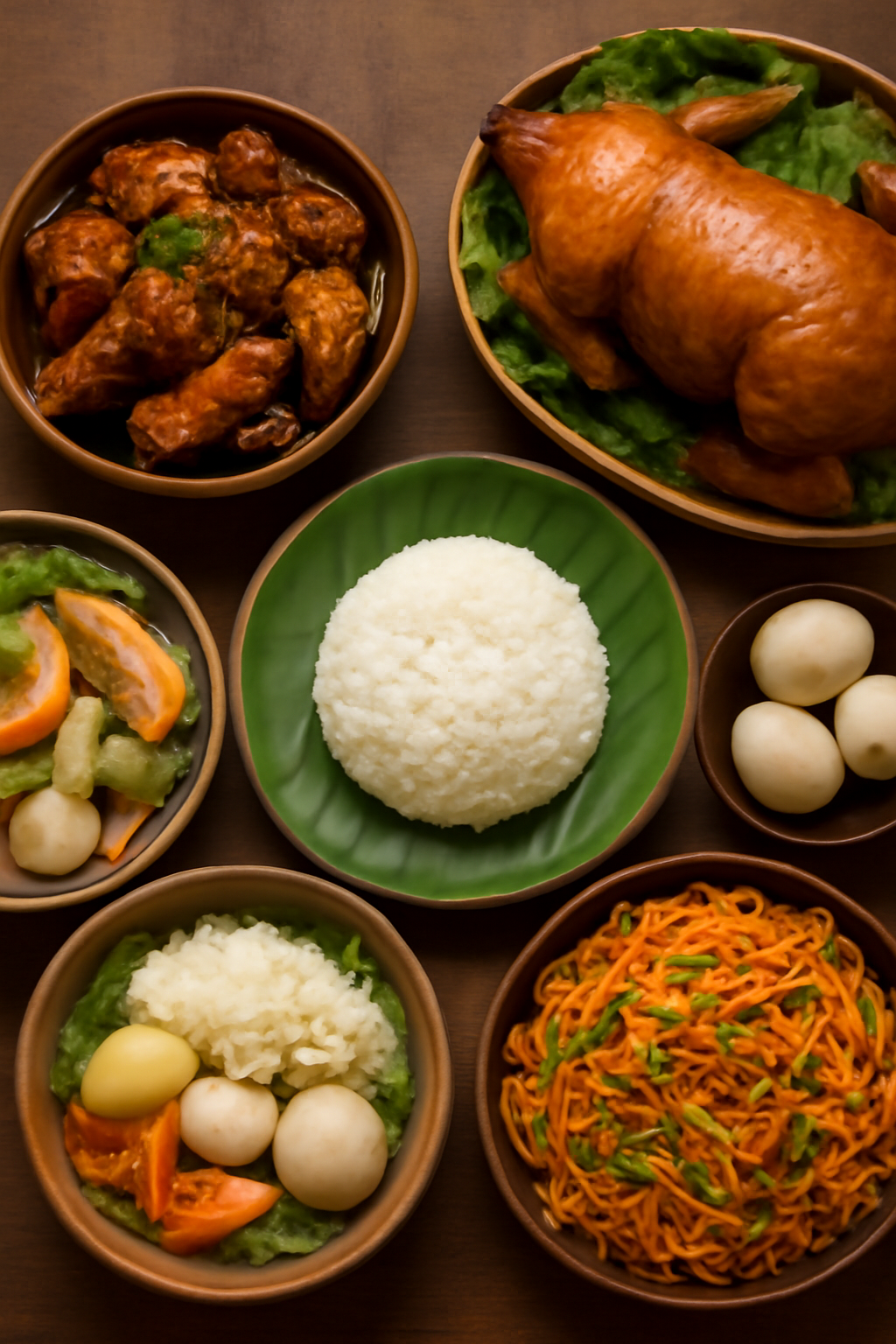
Filipino cuisine is a beautiful fusion of indigenous flavors and influences from various cultures, shaped over centuries of trade, colonization, and cultural exchange. From the sweet and savory notes of adobo to the sour tang of sinigang, Filipino food is a reflection of the country’s rich history, where indigenous ingredients were combined with foreign spices and techniques to create a unique culinary identity.
One of the most well-known Filipino dishes is adobo, a dish that holds a special place in Filipino hearts and homes. Made from chicken or pork, adobo is marinated in vinegar, soy sauce, garlic, and bay leaves before being simmered to perfection. The dish’s roots can be traced back to pre-colonial times when Filipinos preserved meats with vinegar and salt, a method adapted by the Spanish through the introduction of soy sauce. Today, adobo is a quintessential Filipino dish, with each region offering its own version depending on local ingredients and cooking methods.
Another iconic dish is sinigang, a sour and savory soup made from tamarind, tomatoes, and a variety of meats or seafood. The tangy broth, typically made with pork or shrimp, is infused with fresh vegetables like kangkong (water spinach) and radish, making it a hearty and satisfying meal. The origins of sinigang lie in the Philippines’ use of indigenous fruits for cooking, and over time, it has evolved with regional variations. Each version of sinigang offers a distinct take on the dish, with different types of souring agents like guava, bilimbi, or green mango, reflecting the local environment and resources.
The influence of Spanish colonization is also evident in the popularity of lechon, or roasted whole pig. Originally introduced by the Spanish as a form of feasting, lechon has become a staple at major celebrations and festivals. The method of cooking a whole pig over an open flame, seasoned with local spices and herbs, results in crispy skin and tender meat, making lechon a symbol of celebration, abundance, and community. Over the centuries, the dish has been perfected and regionalized, with each area of the Philippines adding its own twist to the preparation.
Filipino street food offers another glimpse into the country’s culinary heritage. One of the most famous street foods is balut, a boiled fertilized duck egg, often sold by vendors at night. Though it may be considered an acquired taste for some, balut has been a part of Filipino culture for centuries. It reflects the influence of Chinese and Southeast Asian culinary traditions and remains a popular snack for many Filipinos, particularly in the evenings.
Rice is the backbone of Filipino meals, and it is featured in a variety of forms. Whether served plain or incorporated into dishes like pancit (noodles) or sinangag (garlic fried rice), rice is essential to Filipino dining. It is also used as an accompaniment to more flavorful dishes, balancing the richness of stews, grilled meats, and vegetables.
Filipino cuisine places a significant emphasis on communal dining. Meals are meant to be shared, bringing families and communities together around the table. The concept of bayanihan (community spirit) is reflected in how food is enjoyed, with large platters of food often served in the middle of the table for everyone to enjoy. This communal approach to dining fosters connection, creating an atmosphere of warmth and togetherness.
In conclusion, Filipino cuisine is a flavorful tapestry of history, culture, and tradition. With its blend of indigenous ingredients and foreign influences, Filipino food continues to evolve while remaining rooted in its rich culinary heritage. Each dish tells a story, and each meal is an opportunity to connect with the history and culture of the Philippines.
